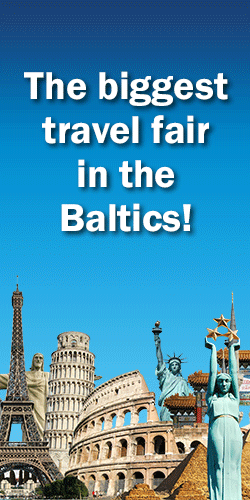Spring is by far our favourite season. See why.
Collecting birch sap
Reklāma
Refresh your body and mind with birch water
The forests of Estonia are home to a special tree that swells with a healthy elixir in early spring. The tree in question is birch, and its sap, full of vitamin C and B, antioxidants and minerals, can be tapped and drunk on the spot.
Birch sap flow usually coincides with beginning of flowering of the liverworts – when the night temperature no longer falls below zero. The movement of the birch sap stops with the onset of flowering of the wood anemone. Approximately two weeks out of the entire period of sap movement are ideal for sap collecting.
Nutrients, which the tree loses during collection of sap, account for only a small fraction of the entire stock, so the process has little effect on the growth of an adult tree. In spring, the tree can easily refill any moisture lost during sap collection, as the soil has moisture in abundance.
After you have finished collecting sap, it is recommended to clog the remaining hole with a wooden stopper to reduce the flow.
Estonia is among the top three bird-watching destinations in Europe
With over 380 species spotted annually, Estonia is among the top three bird-watching destinations in Europe. In just a morning, a bird enthusiast like Mya-Rose Craig can look for swans and sea birds on a rocky coastline and rare varieties like pygmy owls, capercaillies and woodpeckers in a dense, quiet forest.
Birding season begins as early as in March. Spring migration culminates in mid-May and the bird observation season winds down by mid-June. The autumn migration tends to be more modest, but draws enthusiasts to Estonia in September and October as well. Thanks to the large forest areas and suitable habitats, six species of eagle can be seen in Estonia as well as 8 of 9 European woodpecker species.
Matsalu National Park is the most important stopover and feeding site for migratory birds on their journey between the Arctic and western Europe.
Fifth season
The time of early spring floods offers some magical experiences
During the 'fifth season', you can go canoeing in Soomaa National Park when the river Halliste overflows its banks and floods the surrounding meadows and forests.
The time of early spring floods is known as the fifth season in the Riisa Village in Soomaa. There isn't enough room in the river basins of the Rivers Halliste, Raudna and their tributaries for the water from the melting snow and so it floods the floodplain meadows and even the floodplain forests. This is an interesting time, the beginning of the water hiking season when you can go about canoeing in the forest. The biggest floods are late March and early April.
A hike and a swim in a bog
A foggy sunrise in a bog calls for a refreshing dip
Mire landscapes stretching to the horizon and autumnal colours in bogs make up a scene rarely encountered elsewhere in the world.
If you long for a truly memorable experience, get there early, watch the sun rise over a misty bog and jump in.
Bogs and mires are important in Estonian folklore, and they are seen as places of of mystery and peace. They cover fifth of the mainland area in Estonia, of which bogs are the most ancient, stretching back to over 10,000 years. The flora and fauna in these areas is like nowhere else, with many unique animal and plant species present. About a quarter of Estonia's plants grow only in mires, among them many relict species from the Ice Age.
There are countless hiking routes and nature trails all over the country. Simply find your favourite and start planning a trip!
Eating in the wild
Everything just tastes better outdoors
After a long walk in a still and misty bog, star chef Heston Blumenthal indulged all his senses with a warm bowl of local mushroom soup.
There is a new generation of Estonian chefs leading a culinary revolution by mixing Scandinavian-inspired cooking with traditional flavours to conceive innovative dishes at reasonable prices. Estonian chefs are heading to the forest for inspiration – whether it is wild mushrooms, spruce shoots, pickled ramsons, blackcurrant leaves or grated green pine cones.
What makes a dish a national dish and what makes a dish an Estonian dish? The common feature is the fact that food must be fresh, tasty, made from local ingredients and produced locally. Many companies hold local and Estonian ingredients in high regard throughout the year, although the seasons and specificities of the local area are taken into account as well, all of which reflect in the quality of what is offered. Find out more about Estonian food.
To publish this article please contact BalticTravelnews.eu editorial board





.jpg)



